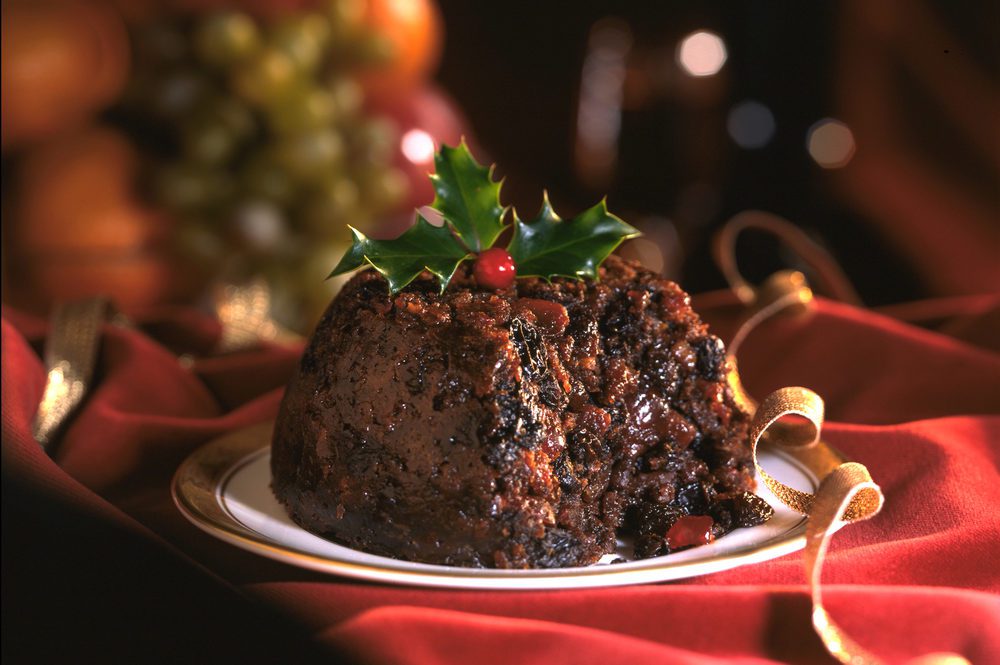It’s only a few weeks until Christmas day, so many of us will be planning the menu for the big day dinner, along with any other social gatherings planned at home ahead of Christmas and Hogmanay.
While turkey and all the trimmings, mulled wine, mince pies and a festive sandwich may be some people’s food and drink traditions at this time of year, there’s some that have been around for years and many that are unique to Scotland.
To understand some of our Christmas traditions, we need to look at our history.
Christmas wasn’t always as we know it today. During the Reformation (around the 1600s), the UK was ruled by Oliver Cromwell who banned “Christ’s Mass”.
After Cromwell was no longer in power, the Christmas festivities could return…but not to Scotland.
This was down to the Church of Scotland - a Presbyterian church - who discouraged ‘Yule’ celebrations from around 1583.

The church believed that there was no basis for celebrating the day as it didn't reflect what was in the bible.
There are even records of some people being arrested over unlawful celebrations during the years it was officially banned.
Christmas was taken out of the calendar for Scots and the holiday period, including Christmas day, was a normal work day. In fact, Christmas day was only recognised as a public holiday in 1958.
Despite it not being celebrated for years, Scots Christmas traditions go back years prior to the Reformation.
The Winter Solstice (Yule or “Yogh” in Older Scots) was celebrated by druids, pagans and Vikings.
But what is Christmas without food and drink?
Our celebration of Christmas and New Year come with their own food and drink traditions, a lot of which we still partake in to this day.
From Christmas pudding to black bun and a Scottish version of eggnog, here are some of our food and drink Christmas and New Year traditions, and their origins.
A bit like a yule log, this savoury loaf hails from Shetland and Orkney.
Instead of being baked to look like a log, the loaf is turned into a circle, which represents the sun.
Caraway seeds are then sprinkled on top and are said to represent the “Sìdhe” or winter spirits.

While the humble Christmas pudding has roots in Mediaeval times, it was Prince Albert who made it fashionable again in the 19th century, and to this day many families and keen cooks make their own every November.
Traditionally this is made on Stir-up Sunday, on the last Sunday before advent (usually about a month from Christmas day). Like many age-old rituals there are traditions and superstitions surrounding Stir-up Sunday.
Many believe that the whole family should be present in the kitchen while the eggs, fruit and flour are mixed in order for everyone to get a shot.
The youngest should start the mixing, and carry on up the ages, with the oldest giving a final stir. It is said that the mixture should be stirred east to west, to mark the journey made by the three wise men.
To continue the Christian festive theme, many traditions say that there should be 13 ingredients - to represent Jesus and his 12 disciples.
Charms, tokens or coin are hidden in the mixture before it is cooked, and if you're lucky to find a charm or coin, you can make a wish.
This chocolate treat takes its inspiration from the Celts with the tradition originally started by the Druids, who believed the sun stood still for twelve days in the middle of winter and during this time a log was lit to conquer the darkness, banish evil spirits and bring luck for the coming year.
Large scale Yule fires remained a common way to mark the season over the centuries in Scotland, particularly in northern harbour towns, however, the chocolate version remains popular throughout the UK.
Sir Walter Scott name-checked plum porridge in his poem Old Christmastide.
Ingredients included a boiled leg and shin of beef, stock thickened with bread, spice, dried fruit, sugar and wine.
It turned out in jelly form and was a popular Yule dish until the late 18th Century.
Christmas Eve is still referred to in many parts of Scotland as “Sowans Nicht” which is thought to refer to “sowans” – a dish made from oat husks and fine meal steeped in water for several days until sour.
This dish was prepared and then shared on Christmas Eve.
In Shetland, which is deeply influenced by its Scandinavian heritage, people enjoyed Whipkul, which was a drink of ancient lineage served at the end of a breakfast Yule feast.
It was made of a dozen egg yolks, a pound of sugar, a half pint of rum and a quart of fresh cream with shortbread served on the side.
It’s basically a Scottish version of eggnog, and is easy to make. You can do so by following this recipe.

This dense fruitcake, encased in pastry, is a traditional treat associated with first footing on Hogmanay.
In his book Picturesque Notes on Edinburgh (1879) Robert Louis Stevenson paints a picture of Edinburgh at New Year, including a description of black buns that were on offer in bakers’ windows:
He wrote: ‘Currant-loaf is now popular eating in all households. For weeks before the great morning, confectioners display stacks of Scotch bun — a dense, black substance, inimical to life — and full moons of shortbread adorned with mottoes of peel or sugar-plum, in honour of the season and the family affections. ' Frae Auld Reekie,' ' A guid New Year to ye a',' ' For the Auld Folk at Hame,' are among the most favoured of these devices.’
Black bun can still be found in the more traditional bakers. Alex Dalgetty & Sons, renowned for their Selkirk Bannock, still sell it as do Baynes the bakers, found in the east coast of the central belt.
The origins of black bun can be traced back to Mary Queen of Scots and originated as a Scottish version of a King cake to be eaten on Twelfth Night.
A traditional King cake involved hiding a bean in the cake batter and, whoever found it when the cake was cut, became king for the evening.
Following the reformation, black bun as a celebratory cake was outlawed.
In more recent history it was tradition to bring a black bun when first footing during Hogmanay (when friends and neighbours would visit each other to offer new year’s wishes).
The gift of a black bun was meant to symbolise that the receiving family would not go hungry during the forthcoming year.
It also pairs well with whisky, another gift that was often brought during first footing.
Since ancient times, households across Scotland have welcomed strangers through their doors with the aim of bringing good fortune for the year ahead.
First footing, which stems from the Gaelic practice of “qualtagh”, is still practised today and while some individuals can bring good luck (a dark haired man) for the upcoming 12 months, others can be seen as a harbinger of ill fate (light haired men, redheads and women).
Traditionally, the first footer should be someone who was not already in the house when midnight struck – hence the Scottish party tradition of having one guest leave just before the bells so they can knock on the door as the new year begins.
They would arrive loaded with a coin, bread (or black bun), salt, a lump of coal, and whisky - gifts representing all the things the new year would hopefully bring, such as prosperity, food, flavour, warmth and good cheer.

It's common practise in Scotland to enjoy a meal of steak pie on 1 January.
Why this is the case isn't known, but it is thought that it became popular when new year's day wasn't a holiday, so no one would want to make a big meal on that day.
Buying in a steak pie from the butcher was a quick and easy way to eat well on 1 January.
If you do want to make your own, check out our recipe for a traditional steak pie.
